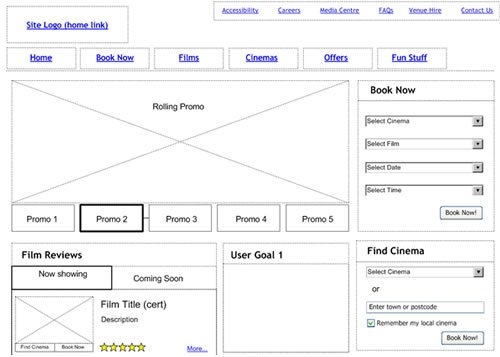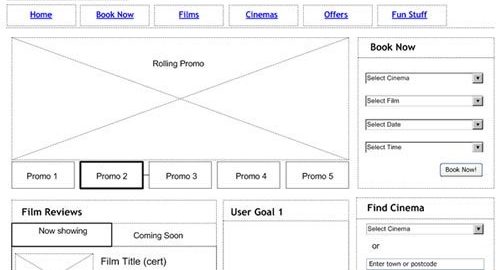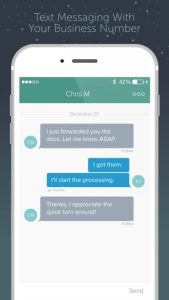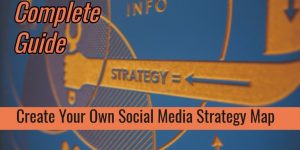In today’s digital marketing landscape, a website is an indispensable business tool. It serves as the face of your brand on the internet – a place where your potential customers learn more about your business, its services, and products. When you build a killer website, you not only attract more of your target market to you by helping them discover your brand in search, you have the necessary tools to work visitors toward conversion through effective content marketing. You can even convert traffic on your website, justifying all the time and other resources you need for a truly killer website.
 Photo by Christopher Gower on Unsplash
Photo by Christopher Gower on Unsplash
Why you must build a killer website
Regardless of the nature or purpose of your business, it’s crucial that you have a website where users can easily find you, learn more about you, get testimonials and reviews from satisfied customers, and consummate the sale, if desired, or send prospective buyers to a source for purchasing your products, such as a physical store. If you get every detail right during the web design and development phase, your business will function like a well-oiled lead-generating machine, helping you to convert your web traffic into customers.
This guide, focused on comparing the differences between web design vs. web development, helps you understand the various components necessary to build a killer website that meets the goals established in your marketing plan. An ineffective website not only doesn’t function effectively, but it also looks unprofessional. An effective business website gives your prospective clients confidence and trust, but a poorly designed website hurts your business by creating uncertainty, doubt, and uneasiness among potential customers.
So, how do you avoid ending up with a poor website, and which are the most important tips for success? In this article, we will discuss six factors you need to consider when building a website for your business.
How to build a killer website
Today, we mainly focus on the technical aspects involved when you wish to build a killer website; hence web development rather than design. For those of you who appreciate a visual guide to supplement this text, I wrote an ebook that guides you step by step through the process from beginning to end. Check out my build a killer website guide. I even include links for discounts on some products you need when building a website. You don’t even need any experience coding to get a very nice-looking website that works to meet your business goals.
A WORD OF WARNING
We assume in this guide you want to build a killer website, which requires a self-hosted website. Don’t choose one of those plug-and-play website hosting/designers like WIX, Squarespace, and Weebly. Sure, these are great as they often offer a free tier and seem easy to use, but the reality is very different. Here’s a list of negatives, which isn’t inclusive of all the problems.
- It’s difficult to switch from these to a different option, such as self-hosted websites
- They are mostly invisible in search as they don’t have good SEO
- The user experience provided by these platforms isn’t great
- You don’t look unique as so many other brands (often those in the same niche) use the same template
- The hosting is slow and lacks up-to-date security
- Page limits encourage users toward one-page websites, which are terrible for SEO and costly for advertising
- and more
1. Purpose
Whether you want to run an e-commerce site, provide local/consulting services, or just expand your online presence, it’s important to establish the main purpose of your business website right off the bat. While some web design elements like readability, navigation, and responsiveness are universal, an e-commerce site has specific requirements that differ from a creative portfolio or a corporate website. By determining the purpose of each page, it is easier to make the right decisions as you work through the web design process.
Before you actually design your website, you may want to consider how you’ll structure the website and how each page fits into your overall goals. I recommend building a wireframe, which involves designing the website on paper (or using Powerpoint or similar tools) to link pages together to see how the website works. Because wireframes don’t have the restrictions and requirements necessary for fully functional websites, they’re must faster and easily modified until you have the design you want. Then, you can build the website according to the wireframes.
A well-thought-out site design is crucial when mapping visitors through your site’s primary navigation and content. Google likes websites that provide a good user experience, which is why it’s crucial for you to create the correct map of navigation.

2. Domain Name and URL Structure
The domain name for your business website is one of the most important aspects to consider when planning your website. A domain name translates into your URL, which is the address of your business online. Much as your physical address helps people find you, a URL directs online users to your website content. And, like a physical address, a URL is unique to a single user.
Hence, your domain name should match your branding and fit your product, if possible. For instance, a photography business might include the term “photography” in its domain name. For instance, I had a friend guide me in search engine optimization (SEO) years ago when I first got a start in website development and his URL was SEOSteve. This element of SEO strategy is hard to change after the fact, so consider this first step carefully.
Also, consider buying alternate spellings of your chosen name to ensure users find you if they’re a little clumsy in entering the address. You also might buy variations of your chosen name to ensure others don’t steal your traffic by mimicking your name once you successfully drive a ton of traffic to your website. For instance, I commonly buy not only the .com, but also the .net, .org, and .info versions of my domain name. For a local company, incorporating your location in your URL structure might help attract local traffic, although it limits your ability to expand geographically.
You buy a domain name through a registrar such as Godaddy. Costs vary based on the popularity of your name, the length of time you wish to hold the domain, and how many domains you purchase at one time. Purchasing multiple-year domain lengths are cost-effective and help your SEO. If the domain name you want is not available, you might approach the owner and offer to pay them to own it.
3. Reliable hosting
A web host provides a space that houses your website content. Commonly, hosts own large internet-connected server farms to store your content. Without a host, your content isn’t available. Sure, you might host your content on your own computer or server, but you likely can’t ensure the level of security and service offered by a hosting company. A bad web host affects major aspects of your website including site speed, uptime, security, and functionality, which impact SEO. That’s why even enterprise operations use hosting.
Ensure you choose a web host that guarantees over 99.5% uptime, and avoid anything below 99%. Apart from uptime, other factors you should consider when choosing your web host include available storage, data security, monthly traffic limits, and customer support. Most hosting companies offer a tiered system (with various pricing options), allowing you to choose the right package for you and providing easy transfer to a different tier as your business grows. Shared hosting starts at around $ 4.95/ month and goes up from there, that’s why small businesses commonly use a shared hosting option where your content is housed on a server with other small businesses, while an enterprise operation uses a dedicated server that only contains their content. Dedicated hosting is MUCH more expensive.
4.CMS
CMS, or a content management system is the heart of your website and eliminates (or greatly reduces) the need for coding in HTML/CSS. WordPress is the most used CMS (with 27 million active websites), followed by Joomla and Drupal. A CMS tells browsers how to make your content appealing to visitors by providing common elements such as menus, headings, and pages. These CMS options are free.
5.Template
You can’t stop with a CMS, you need a template to provide a content structure that eases the time and coding necessary to build a killer website. A template offers containers for your content organized in an appealing fashion, colors and fonts, and other elements, such as widgetized areas for better functionality.
Your new WordPress site includes several WordPress templates identified by the year crafted. You can easily upload new templates using the zip file provided by template designers. There are a number of free templates, although I think you get what you pay for when it comes to templates. Free templates are often hard to work with, in my opinion. And, templates aren’t prohibitively costly, usually under $ 100. In the past, you purchased a template once. Now, more providers rent you the template for a period of time. Be sure to ask if you’re not sure before purchasing a template.
Here are some things to consider as you sift through available templates looking for what works best for your purposes (changing your theme isn’t impossible, but it’s time-consuming and awkward, so choose wisely). Here are some things to consider as you make your template choice.
- Responsiveness. Over 50% of global web traffic comes from mobile devices, and overlooking responsiveness, which is a set of coding principles that allow your website to look great on mobile devices, sets your website up for failure. It’s important to make sure your site’s design, logos, text, images, and other elements are optimized for screens of different sizes and orientations.
- Security. WordPress takes security seriously and offers patches in new versions to fill any security holes uncovered. But you should go beyond that. Just like you wouldn’t leave the front door to your physical store unlocked, you should ensure your business website is secure. Customers are smarter now than ever before when making online purchases. It’s unlikely that anyone would share any personal or financial details on a site that lacks adequate security. You should use a valid SSL certificate to encrypt your site’s data, a requirement if you accept credit cards and an SEO ranking factor.
- Functionality. Choose a template that offers buckets for your content in positions aligning with your vision for the website.
6. Plugins
Plugins provide enhanced functionality for your website. Some themes include several plugins and you can easily add more to suit your purposes. Many plugins are free or offer freemium options with a free tier and paid tiers. Others require a small payment on a monthly or yearly basis. My guide to help you build a killer website offers some of my favorite plugins.
Install plugins from inside your website’s backend or by downloading them from the developer’s website and uploading the zip file into your website (you’ll see a menu option called plugins). You must activate the plugin and, often, choose settings before the plugin works. In some cases, the plugin creates a widget (such as a social media plugin to allow following and liking) that gets dragged into a widgetized area and dropped in. In other cases, the plugin works behind the scenes to help you run your website, such as integrating your website with Google Analytics so you can monitor your performance.
7. Speed
Your website’s loading speed can make or break your entire business online. The attention span of consumers is steadily decreasing. The likelihood of someone waiting more than a few seconds on a slow website is next to none. In order to prevent them from navigating away to a competitor’s site, here are some actionable steps you can take to speed up your website:
- Compress your images
- Choose a reputable hosting provider
- Optimize your site for mobile devices
- Leverage caching – Caching is the process of storing your data on a user’s device. It can dramatically improve the loading speed, especially for returning users
- Reduce CSS and Javascript
- Remove unused plugins
- Minimize HTTP requests and server response time
- Use a content distribution network (CDN) like Cloudflare
Conclusion
Your business website is arguably your most important digital business tool, and it’s more necessary than ever to have one that helps you drive the results you need to run an effective business online.
Thanks for reading!
Digital & Social Articles on Business 2 Community
(34)






